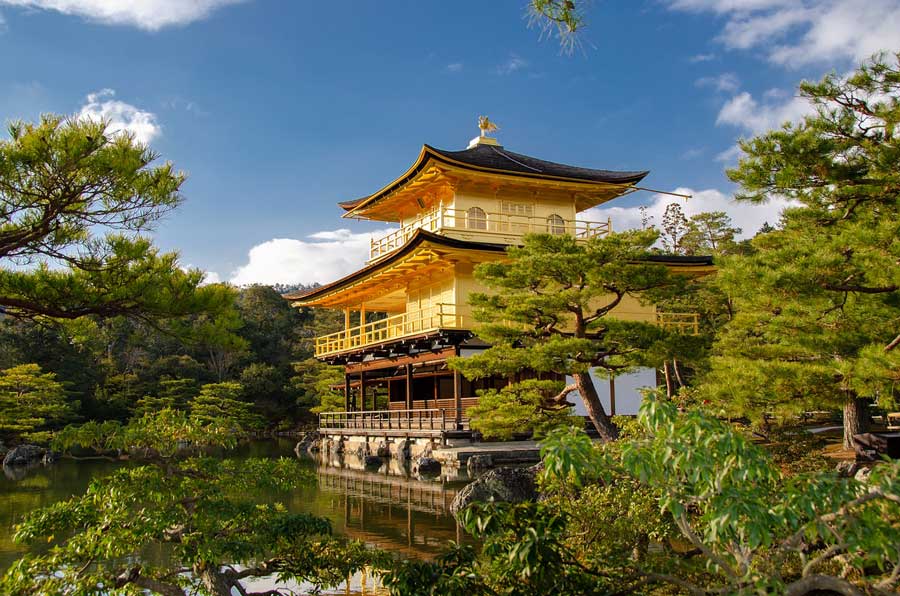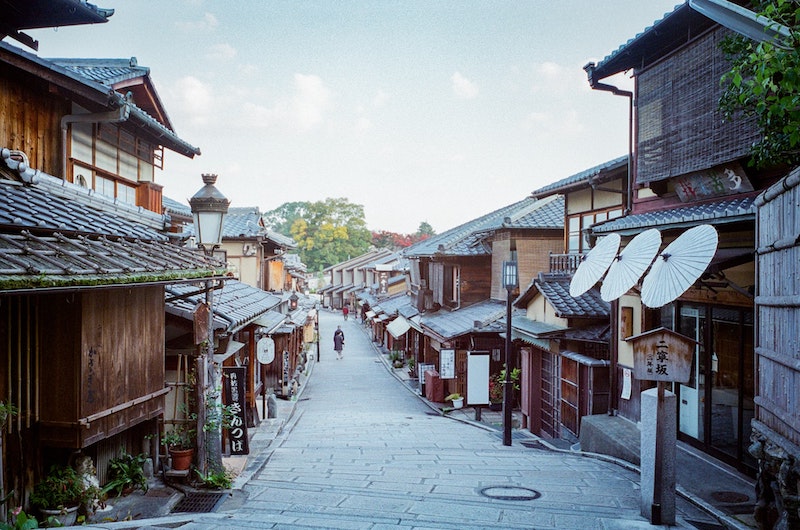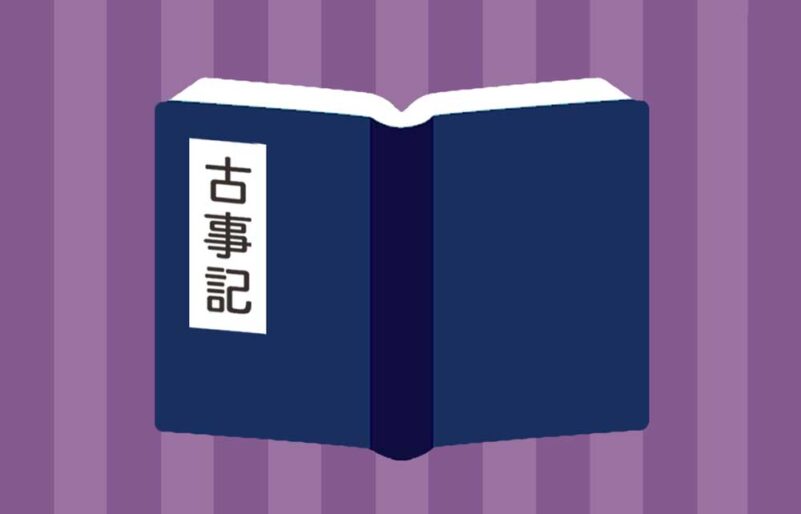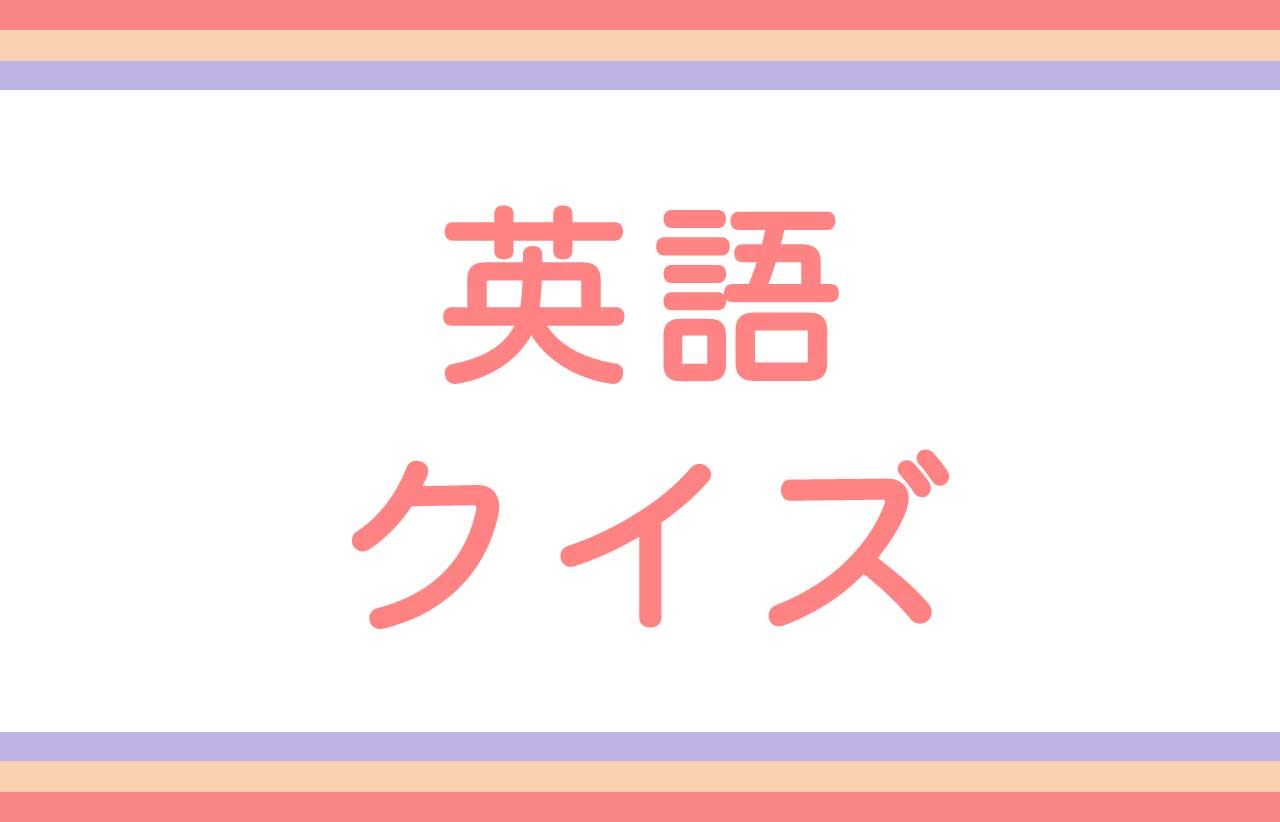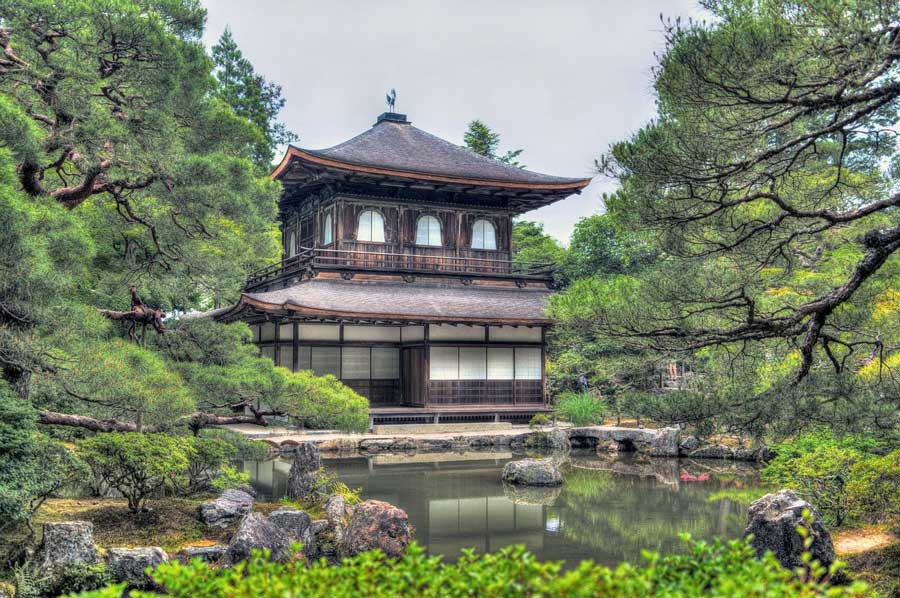
「若い頃は金閣寺がいいと思ったけど、大人になると銀閣寺のほうが好きになった。」
そんな声もよく聞こえてくる、厳かな佇まいの銀閣寺は、京の「侘び寂び」の世界観を象徴する最高傑作のひとつとして、国内外を問わず大変有名です。
今回は、初めて京都を訪れる外国人の方々などに、銀閣寺を英語で説明する表現をご紹介していきますので、ご参考になれば幸いです。
ご興味のある方は、当サイトで 英語クイズ(5000問) を出題しておりますので是非ご覧ください。
目次
銀閣寺へのアクセス
Kyoto is a wonderful place for walking and exploring, both inside the city and on the outskirts. The best-known parts of the city are Higashiyama, where Ginkaku-ji temple, Kiyomizudera temple, and Heian-jingu shrine are found.
(京都は、市内も郊外も散策に適した素晴らしい場所です。最もよく知られているのは東山と呼ばれる地区で、銀閣寺や清水寺、平安神宮などがあります。)
Ginkaku-ji can be reached by direct bus #5, #17, or #100 from Kyoto Station in about 40 minutes.
(銀閣寺は、京都駅からの5系統、17系統、100系統のバスで40分ほどで行くことができます。)
銀閣寺の見どころ
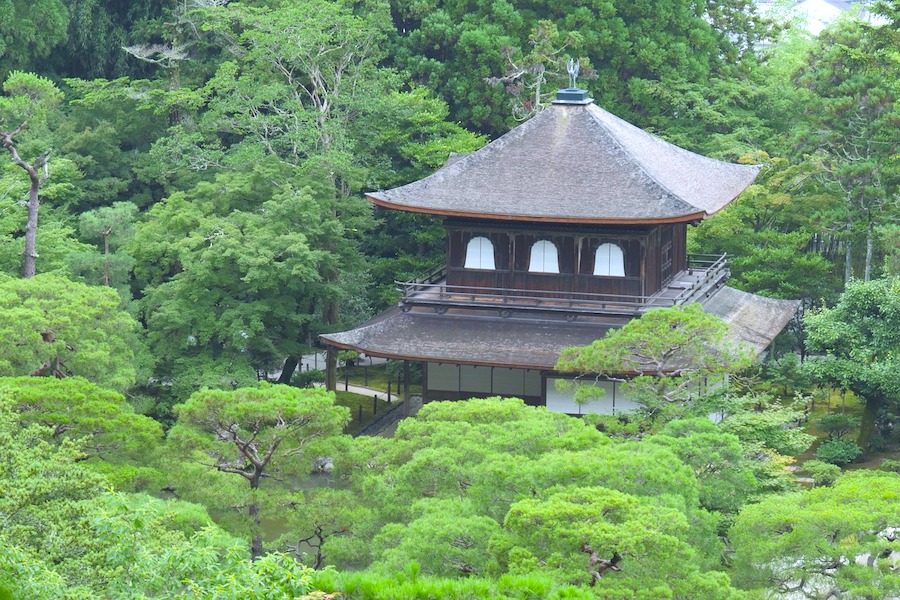
Ginkaku-ji, also known as Jisho-ji, is a Rinzai Zen temple.
(慈照寺としても知られる銀閣寺は、臨済宗の寺院です。)
Ginkaku-ji temple belongs to the Shokoku-ji sect of the Rinzai school of Zen.
(臨済宗相国寺派の寺院です。)
Jisho-ji was registered as a World Heritage Site by UNESCO in 1994.
(1994年に世界遺産として登録されました。)
It was originally built by the shogun Ashikaga Yoshimasa as one of the buildings of the Higashiyama villa in 1490 and was intended to enshrine a statue of the Kannon Bodhisattva.
(もともとは、1490年に将軍足利義政によって別宅として建てた東山殿の一部で、観音堂でした。)
Although Ginkaku means “silver hall,” this wooden building is not covered with silver.
(銀閣は「銀の楼閣」という意味ですが、建物は木造で、銀で覆われてはいません。)
It was designed like a pavilion with a phoenix on top, in a style similar to the Kinkaku. However, from the outset, the building was painted with black lacquer and not covered with silver leaf.
(金閣と同様に楼閣の上に鳳凰が載っていますが、建物は最初から黒漆が塗られており銀箔は貼られていません。)
After Yoshimasa’s death, it was converted to a Zen temple.
(義政の死後、禅寺に改められました。)
The name “Ginkaku” was not given to the building by Yoshimasa, but some time later by people who compared Ginkaku with Kinkaku, built by Yoshimitsu.
(銀閣という名は義政がつけたのではなく、のちの人々が義満の建てた金閣と比較して呼ぶようになったのです。)
Ginkaku-ji is a symbol of Higashiyama culture’s “wabi” and “sabi.”
(銀閣寺は、東山文化の侘び寂びを象徴しています。)
Unlike the brilliant Kinkaku-ji, the appearance of Ginkaku-ji is humble and is said to represent the Japanese aesthetics, “wabi sabi.”
(豪華絢爛な金閣寺とは対照的に、銀閣寺の佇まいは慎ましく、「侘び寂び」という日本の美学を表しているといわれています。)
“Wabi sabi” is a traditional Japanese aesthetic that finds beauty in refined simplicity and imperfection.
(侘び寂びとは、洗練された簡素さと不完全さの中に美しさを見出す、日本の伝統的な美学です。)
書院造と茶室
Aside from the Kannon-do, the only other original villa structure at Ginkaku-ji is the Togu-do, which was created to situate the statues of Buddha for worship.
(観音堂以外で、銀閣寺にある唯一のオリジナルの建物は東求堂であり、仏堂として建てられました。)
The building also contains a statue of Ashikaga Yoshimasa, but its most famous aspect is Yoshimasa’s office, known as the tearoom, Dojin-sai, which was designed by Murata Shuko, the founder of wabicha (tea ceremony).
(東求堂には足利義政の像もありますが、最も有名なのは侘茶の開祖である村田珠光によって設計された、同仁斎として知られる義政の書斎です。)
From a technical perspective, Ginkaku-ji is considered one of the earliest buildings that defined the style of architecture called “shoin-zukuri.” Shoin means study room.
(技術的な観点で言いますと、銀閣寺は「書院造」と呼ばれる建築様式を定義した最初の建造物のひとつとされています。Shoin とは 書斎のことです。)
The elegant shoin (study room) architecture has Japanese aesthetics of refinement and simplicity.
(優美な書院造には、洗練された簡素さという日本の美学があります。)
The shoin-zukuri was originally employed for the studies used by Buddhist monks.
(書院造は、もともと仏僧の書斎として用いられていました。)
The style of architecture was popular among samurai for its simplicity and became the origin of tea ceremony rooms.
(この書院造の構造は、その簡素さで武家の間で好まれ、やがて茶室のモデルとなりました。)
Yoshimasa used the Shoin style for a room called the Dojin-sai in the Togu-do, where he placed four-and-a-half tatami mats and built a study desk and shelves of different heights. He enjoyed the tea ceremony there.
(義政は、東求堂の同仁斎と呼ばれる四畳半の部屋に畳を敷き、机や違い棚を設け、そこで茶の湯を楽しみました。)
The building “Togu-do” holds the oldest tearoom in Japan, its simple and classic design served as a model for many later tearooms.
(東求堂には日本最古の茶室があり、簡素で古典的なデザインが、のちの多くの茶室のモデルとなりました。)
銀沙灘と向月台
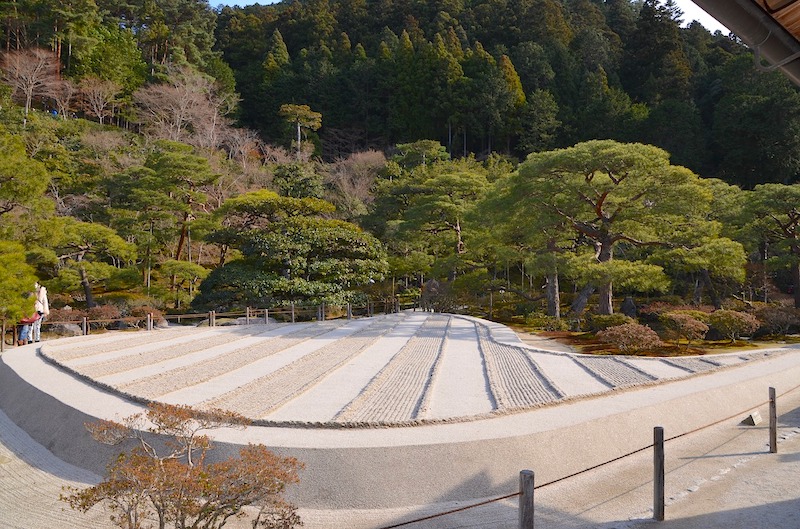
You will find walkways leading through the gardens that were laid out by painter Sōami in the Muromachi period.
(室町時代の画家、相阿弥によって設計された庭園を通る遊歩道があります。)
As soon as you enter the precincts, you will notice two large objects made of white sand that look like pieces of modern art.
(境内に入るとすぐに、まるでモダンアートのような白い砂でつくられた2つのものが目にとまります。)
“Kōgetsu-dai,” the moon-facing platform, resembles Mt. Fuji, and “Ginsha-dan,” the silver sea of sand, looks like a rippled expanse of water.
(向月台は富士山のようなかたちで、銀沙灘はさざ波が広がっているように見えます。)
In the rock garden at Ginkaku-ji you see raked cones of white sand, which are designed to reflect the moonlight at night.
(銀閣寺の枯山水には白い砂の円錐があり、夜に月の光を反射するように作られています。)
The gardens include cones of white sand known as kōgetsudai, designed to reflect moonlight and enhance the beauty of the garden at night.
(庭園には向月台と呼ばれる白い砂の円錐があり、月明かりを反射して夜の庭園の美しさを高めるために設計されています。)
enhance は、価値・質・魅力などを「高める」「より良くする」という意味です。
